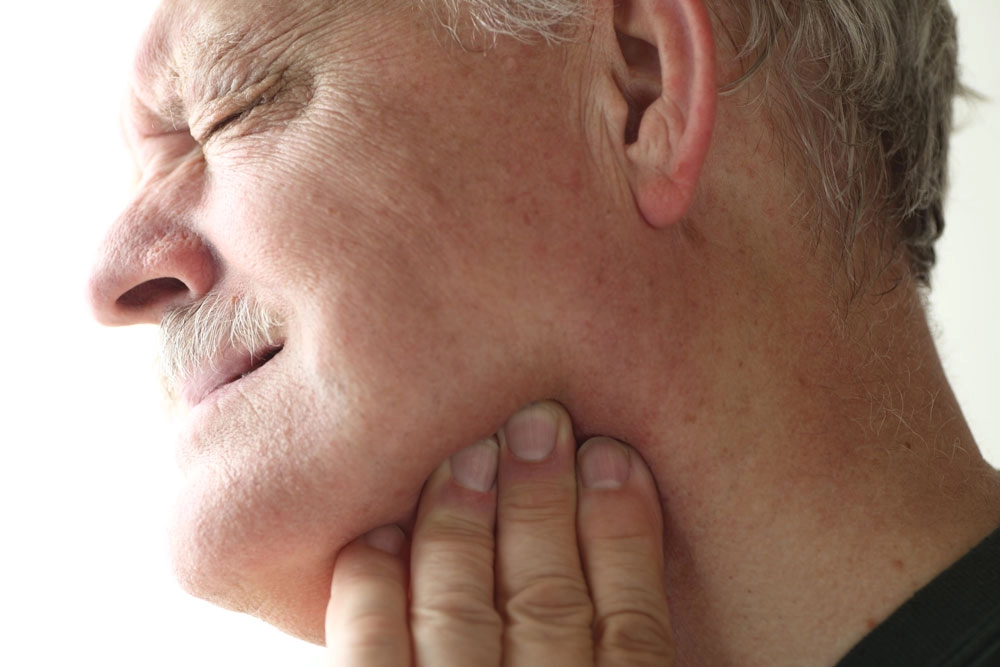Head, Neck & Jaw Pain Management
Helping you find relief from TMJ and TMD-related discomfort
Head, Neck & Jaw Pain Management
Helping you find relief from TMJ and TMD-related discomfort
You weren’t meant to chew through the pain. If your jaw is giving you grief—whether it’s tension, clicking, headaches, or discomfort when chewing—it could be a sign of a temporomandibular disorder (TMD). At Alma Dental Surgery, we take a calm, compassionate approach to diagnosing and managing jaw joint issues with solutions that are as gentle as they are effective.
What is TMD?
Your jaw does a lot of heavy lifting—talking, chewing, yawning—and sometimes, it lets you know when things aren’t quite right. Temporomandibular disorder (TMD) is the name for problems with the jaw joints and muscles that help your mouth move. These joints sit just in front of your ears and act like hinges, helping you open and close your mouth smoothly.
When something throws this system off—like clenching your jaw, stress, muscle strain, or a misaligned bite—it can lead to pain, clicking, headaches, or trouble moving your jaw. That’s TMD.

What TMD can look like
TMD symptoms can sneak up on you—or hit all at once. Sometimes it’s just the occasional jaw click. Other times, it’s a full-blown headache you didn’t see coming. Whether it’s mild and fleeting or more constant and disruptive, here are some of the most common signs TMD might be the culprit:
- Jaw pain or tenderness
- Headaches (often in the temples)
- Neck, shoulder, or upper back tension
- Clicking, popping, or grinding noises when opening the mouth
- Difficulty or discomfort when chewing
- Restricted jaw movement or locking
- Earaches or a feeling of fullness in the ears
- Worn, chipped, or flattened teeth (from clenching or grinding)
- Difficulty or discomfort when chewing
- Restricted jaw movement or locking
- Earaches or a feeling of fullness in the ears
- Worn, chipped, or flattened teeth (from clenching or grinding)
If that’s you, a dental evaluation may help uncover whether TMD is the underlying cause.
What causes TMD?
TMD symptoms don’t come out of nowhere. From everyday stress to misaligned bites, there are several reasons your jaw might be sore, stiff, or tired. Here’s what we look for.
- Bruxism: Habitual clenching or grinding of teeth, often during sleep
- Malocclusion: Misalignment of the bite that affects jaw function
- Jaw injury: Trauma to the face or jaw joint
- Stress or anxiety: Which can cause muscle tension or lead to bruxism
- Arthritis: Inflammation in the jaw joint
- Overuse: Excessive gum chewing or nail biting
Our team takes a holistic approach to diagnosis, working to understand the root cause and contributing factors before tailoring a treatment plan.

How we diagnose TMD
To understand what’s really going on beneath the surface, your assessment may involve:
- A detailed discussion of your symptoms and lifestyle
- A physical examination of your jaw joint and surrounding muscles
- Bite analysis to assess alignment
- Intraoral evaluation to check for signs of wear or damage
- Imaging (such as X-rays or scans), if needed
From there, we’ll talk you through what we’ve found and walk you through the best next steps—clearly, calmly, and with your comfort in mind.

TMD and jaw pain care that fits you
TMD management often involves a mix of lifestyle changes, dental therapies, and supportive care—always tailored to your unique needs. Depending on the cause and severity of your symptoms, we may recommend one or more of the following:
1. Removable splints or night guards
Custom-made dental splints help protect your teeth from the effects of grinding and relieve stress on the jaw joint. These are often worn during sleep.
3. Bite adjustment (occlusal therapy)
Minor reshaping of the biting surfaces of teeth may help balance your bite and reduce strain on the jaw joints.
5. Repair of damage from bruxism
We may recommend restorative treatments (such as crowns or bonding) to repair teeth worn or cracked from grinding or clenching.
2. Muscle relaxation therapies
Techniques such as dry needling (a form of trigger-point therapy similar to acupuncture) can help release tension in the jaw, head, and neck muscles.
4. Orthodontic or restorative treatment
In some cases, correcting bite alignment through braces, clear aligners, or restorative dental work can improve jaw function and alleviate symptoms.
5. Repair of damage from bruxism
We may recommend restorative treatments (such as crowns or bonding) to repair teeth worn or cracked from grinding or clenching.
Should you seek help for jaw pain?
The earlier the better. While occasional jaw tension or clicking may not always be a concern, persistent or worsening symptoms should be professionally assessed. Early intervention can prevent the problem from becoming chronic or more complex to treat.
Let’s help you find relief from TMD
You weren’t meant to live in discomfort! If jaw pain or constant headaches are dragging you down, it’s time to feel better. At Alma Dental Surgery, we take a warm, personalised approach to diagnosing and treating TMD-related head, neck, and jaw pain—because you’ve got better things to do than clench your way through life..
Feel like your jaw’s holding a grudge? Book a consultation today—our caring team will help you understand your symptoms, uncover the cause, and find a treatment plan that truly fits you.

